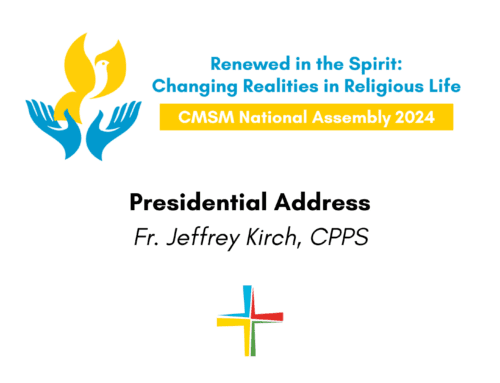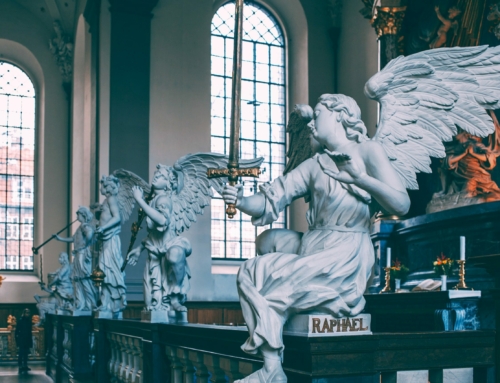Spiritual direction training rarely attends to functional or practical features of the ministry. In this article, Fr. Kenneth Davis, OFM Conv. addresses two prominent functional features directors should attend to: the physical environment of the spiritual direction encounter and the use of files or documentation.
Click here to download a copy of the essay.
Spiritual direction training rarely attends to functional or practical features of the ministry. Therefore, this article addresses two prominent functional features directors should attend to: the physical environment of the spiritual direction encounter and the use of files or documentation.
The Physical Environment
What is the function of the physical environment in a spiritual direction encounter? The nature of spiritual direction requires confidentiality, concentration, and integrity. Hence, the function of the physical environment is to facilitate those requirements.
Confidentiality requires privacy. What is shared must not be overheard by third parties. Although meeting outdoors might appeal, there are limitations. Weather may interfere. Not all communication is verbal: crying or other easily interpreted body language is revealing even if the words cannot be overheard. Walking together during direction is also practiced. However, walking limits both what can be communicated via body language as well as the ability to see and interpret facial expressions.
Some directors meet directees in the latter’s homes. However, this poses serious questions for safe environment. And there are distractions. Family and caregivers may be about. Often televisions or smart phones are in use. For the homebound, a better option might be an internet encounter using headphones instead.
For these reasons, the typical place to meet for direction is an office. Not everyone has an office or can afford one, but it may be a necessary stipulation. Accessibility of an office also requires consideration. Can it be reached by public transportation? Is it located in a safe neighborhood? Is parking available? Can someone with physical challenges enter? Is it available at convenient times? Does it meet current codes, e.g., fire regulations?
Besides confidentiality, concentration is necessary in spiritual direction. Therefore, an office should be free of distractions. If the temperature is uncomfortable, it interferes with concentration. Unpleasant noise or smells hinders concentration. Uncomfortable furniture can also disturb. Clutter or uncleanliness siphon attention away.
Some of these challenges are more easily overcome than others. Soft music or natural sounds such as a waterfall can mute noisy distractions (and add a layer of privacy). Incense may be helpful if not used to mask unpleasant odors.
An office used for purposes besides spiritual direction may include a certain amount of chronic paperwork or open books. However, one can arrange the furniture in such a way that a busy desk may not be visible from the directee’s chair. Likewise, color (e.g., plants and decorations) or candles in the space devoted to direction helps concentrate the directee on spiritual direction rather than some intriguing project on a nearby desk.
Finally, the integrity of the spiritual direction relationship is also necessary. Proper boundaries are better maintained in a professional setting rather than in the home of either the director or directee. An office located in a high traffic hall is preferable. And it is unwise to conduct spiritual direction at times when no one else is in the building. A convenient, clean restroom also is helpful.
The office used for spiritual direction should have a door shut for privacy, but fitted with a window to help preserve a safe environment. Muted office lighting should not be so dark that someone passing the window cannot see inside. On cloudy days consider more light. For sake of the directee’s privacy, arrange furniture such that the director is always seen from the window while the directee is not. Seating the directee in such a way that the office exit is not blocked by the director may make some directees feel safer. Provision for a directee’s coat, umbrella, etc. ought not obscure the view of the window. To comfort a distressed directee without physical touch, a handy box of tissues is helpful. Offering a tissue rather than a hug connotes compassion while respecting boundaries.
Attending to the functional features of the physical environment of spiritual direction assists the confidentiality, concentration, and integrity of the spiritual direction relationship. But what about a consistent method of documenting and resourcing files for spiritual direction?
Keeping Files
Many spiritual directors do not document their discussions with directees and there are good reasons. If a director has an exceptional memory or few directees, there may be no need to document. However, there are also good reasons to keep such records as explained below, followed by a note about the privacy of such records.
If a spiritual director has many directees, memory may be inadequate. The director may begin to confuse directees. or surprise a directee by not recollecting important information previously shared. Here is practical advice for those directors who choose to document their interactions.
First, consider spacing appointments to allow time both before and after each directee. This allows the director to complete two, helpful tasks. Immediately after an appointment, the director documents the discussion. Try recording the three voices attended to during spiritual direction, i.e., the Voice of God, the voice of the directee, and the voice of the director. Consider using three different color inks or three columns or three, separate pages.
The voice of the director includes one’s own insights, emotional responses, reactions or distractions. This proves helpful during the supervision of spiritual direction.
The voice of the directee includes not only what is spoken, but what is unspoken as well. Note tone, facial expressions, or body language. Later a director might circle back to an issue that seemed to trigger such nonverbal interest to either confirm a topic’s significant or conclude the issue was misunderstood by the director.
Finally, the voice of God distinguishes spiritual direction from other helping relationships. Not only should this be recorded, but it brings us to the second reason for keeping and filing such documents.
Before each appointment, the director prayerfully ponders all the previous sessions of a particular directee. Often such immediate preparation elicits new insights, questions or connections not previously considered. For example, many directees apologize for sharing seemingly unconnected or random thoughts. Directors might be more patient with what appears rambling once they pray over a file and see more coherence than what was first apparent. Over time, if tested and confirmed by the directee, this creates a helpful narrative of God’s action in the life of a directee.
Files are best kept only in hand written copy. Not only does this force the director to slow down (which contributes to recollection and reflection), but unlike electronic media, a single, hard copy cannot be hacked.
Further methods for ensuring privacy include: (a) keeping files in a locked cabinet inside a locked room; (b) coding the files such that no names or identifying characteristics appear; (c) using one’s own shorthand, abbreviations, etc. such that it is unlikely anyone but the director would understand much in the file; (d) keeping and using the files only in a secure location; (e) immediately destroying the file of a directee who is no longer seeing the director.
Humans are fallible and memories fleeting. A good habit of documenting, pondering, and securing files is one practical way to improve the ministry of spiritual direction. Humans also have bodies. A physical environment facilitating rather than distracting from spiritual direction also helps. While not the only two functional features of spiritual direction to consider, these two often-overlooked features can significantly improve the spiritual direction experience for both director and directee.






